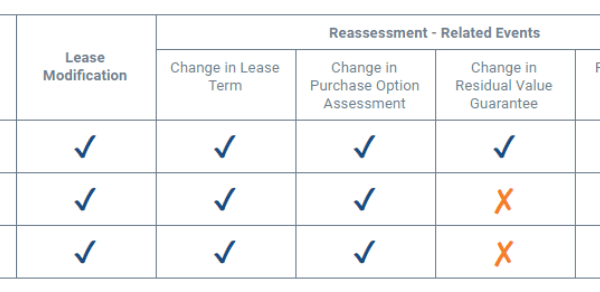This post originally appeared on Marketplace Advertiser, Connected Real Estate Magazine and is republished with permission. Find out how to syndicate your content with theBrokerList.
console.debug(‘TRINITY_WP’, ‘Skip player from rendering’, ‘is single: , is main loop: 1, is main query: 1’);console.debug(‘TRINITY_WP’, ‘trinity_content_filter’);
Offices have been a lightly occupied during the last year of the COVID-19 pandemic, but companies are slowly making their way back. As they do, it will be critical for commercial real estate owners to ensure their in-building wireless networks are running just as well as they were prior to the health crisis—if not better. That’s because the work place is quickly becoming more digital, which was discussed during Connected Real Estate Magazine’s fourth Connected Virtual Tech Event.
Planon President (North America) and Connected Virtual Tech Event Chairman Darlene Pope moderated the, “New Digital Workplace: Data-Driven Insights on the Future of Work” panel. The panel comprised Cushman & Wakefield Executive Managing Director Pay Wu, CBRE Strategic Leader Ashley Lippitt, CBRE Global Digital Workplace Solutions and Strategy Drew DePriest and RXR Realty VP of Product Management Cory Clarke. The well-rounded discussion examined how a data-driven approach can provide the necessary insights to manage the future of work.
The evolution of CRE data
CRE owners using data to make decisions about their property isn’t a new concept. The type of data they look at has changed however. Wu noted that clients who once primarily focused on square footage and cost balancing have pivoted to looking at more employee-centered metrics.
“It’s not enough to just measure dollars and cents and things that you can measure in all of your building management systems, which we all do tons of,” she said. “There’s an element of ‘self-what.’ ‘What is this data telling me?’ If you have a dashboard that you’re serving up, how’s that informing what I need to do in terms of a decision on a footprint or how to enhance the experience in the space? (Clients) are asking different questions and asking to measure different things. It depends on the stakeholder that you’re dealing with, which is changing more and more.”
Looking beyond occupancy
The amount of tenants in a building at a given time will always be an important metric to a CRE owner. Looking just at the total number isn’t enough anymore, however. Data can and should be leveraged to correlate occupancy with things like time of day, air quality and employee engagements.
“We look at the questions that our tenants are trying to ask us and we want to be able to say, ‘Oh are people that show up more engaged or less engaged?’,” Clarke said. “Getting an integrated solution where we can have sources of data around employee behavior, engagement, occupancy, air quality and starting to look across the different metrics—that to me is the value of that integration piece.”
Meanwhile, data sets have begun to expand to include factors around business systems over the last five years. It’s possible to see if workers are using tools like Zoom or WebEx and use sensors to detect someone’s physical presence. Data like this is only worthwhile if it’s reliable and trusted however. Building data is more likely to be taken at face value if it’s coming from a single truth source.
“To put all of these things into a single place is going to require some level of a translation to get all of the data to make sense alongside each other and then plugging in those things,” DePriest said. “It’s super important that the data can be put alongside each other to be able to make sense of those kinds of correlation.”
DePriest also pointed to an example of how occupancy plus store data helped one of his company’s European retail clients see how their sales correlated with the floor layout. Using sensors, CBRE had heat maps that could determine how long a customer spent time in a certain part of the store. That information determined how the retailer laid out its store.
“(It’s) the concept of analytics that come out of the tools we use in our laptops,” DePriest said. “(It’s also about) understanding things like, ‘Who do I collaborate with most frequently? How much time do I spend in meetings?’ Eventually you can aggregate all of these things together to drive physical design. There’s a whole lot of data that’s out there. The big challenge now is how to you make sense of everything together?”
Protecting data remains a top priority
The evolution of data and rise of the digital workplace is good for CRE owners because it gives them chance to present more offerings to current and prospective tenants. Of course, the more data at a building owner’s disposal the bigger the burden they bear to keep it safe. CRE owners should be prepared for tenants that welcome technology, but under certain conditions. For example, a tenant might welcome sensors to see how many people are using a conference room at a certain time. However, they might not be interested in that sensor being on their corporate network for security reasons. It’s up to the building owner to design around something like that.
There’s also the matter of handling the data itself. It not only needs to be transmitted safely, but once it gets to where it needs to go, tenants want to know it is in a secure location.
“Every company has a slightly different approach to it and it fundamentally comes down to the amount of resources,” Wu said. “There’s an age old conundrum of how fragmented real estate technology is—and the fact that it’s being paid for and deployed by so many different people within an organization. There’s no easy button to connect all of this.”
“I think what we’re finding is that as it relates to pulling all of these pieces together and having a clear understanding of governance, there’s a real value in having a centralized home for data,” Lippitt said. “Also having a team that understands and can own the various pieces around quality, definition and understanding how we can bring value to our customers by prioritizing what we want to do with this data first and foremost.”
Check out next week’s Connected Real Estate Magazine newsletter for more coverage on this week’s Connected Virtual Tech Event.
Joe Dyton can be reached at [email protected].
The post The digital workplace isn’t near—it’s here appeared first on Connected Real Estate Magazine.



